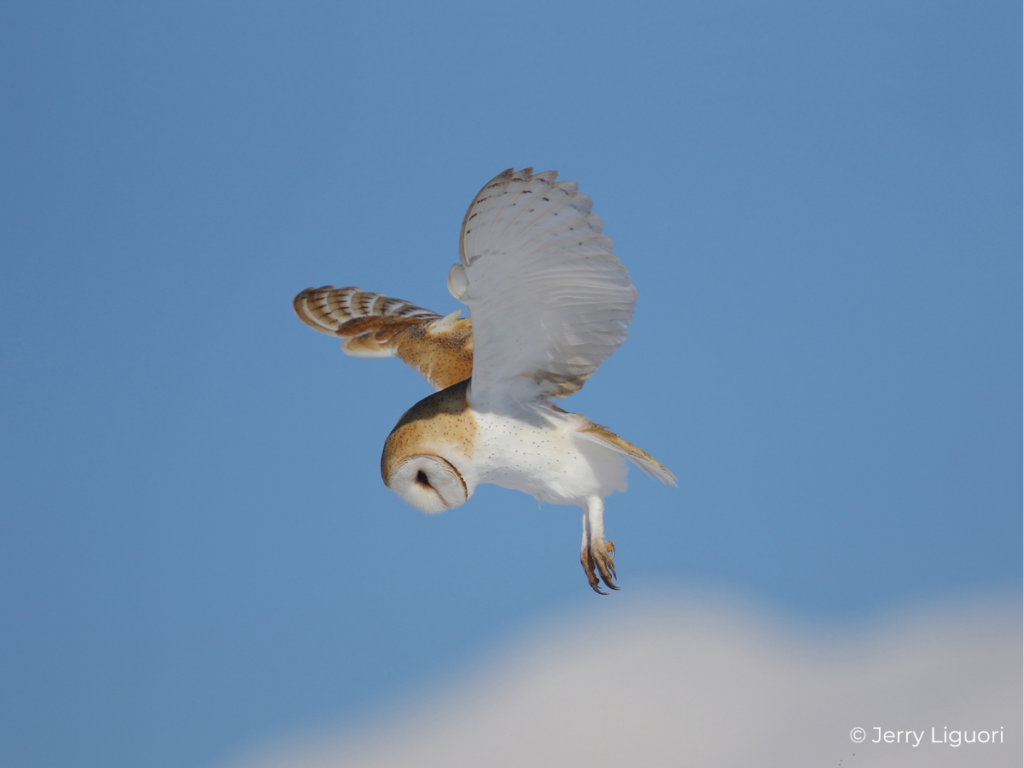Overview
The American Barn Owl is a beautifully plumaged, medium to large-sized owl that is active mostly at night. However, in winter in the northern part of their range when cold temperatures and snow persist, American Barn Owls can be seen hunting during the day. When hunting, they cruise low to the ground actively seeking mice and voles (their main prey) low over open fields and marshes, similar to the hunting style of the Northern Harrier or Short-eared Owl. They also perch on posts or other low perches listening for prey in darkness, locating it by ear. As with all owls, American Barn Owls “echo-locate” prey — changing the position of their head until they zero-in on the exact location of a sound (such as the squeak of a mouse or the rustle of their prey’s feet). American Barn Owls are known to have the keenest hearing of all owls, assisted by their extremely well defined facial disk that gathers and deflects sound towards the ears like a radar dish. This acute hearing allows them to catch prey in total darkness or under deep snow with pinpoint accuracy. They are also though to have the keenest eyesight in darkness, but this fact hasn’t completely been proven.
American Barn Owls are found in open marshes, grasslands, and deserts, often sharing territories with Northern Harriers and Short-eared Owls, and even some Great Horned Owls, and Prairie Falcons, both of which they fall prey to at times. They nest in large cavities in cliffs, barns, structures, man-made nest boxes, or other sufficient openings. They swallow mice and voles whole, and regurgitate large, intact “pellets” of bone and fur. Finding a pile of pellets under a cavity is an ideal way to find an American Barn Owl. Barn Owls are widespread throughout their range and fairly common in certain areas, but declining in others. They are restricted for the most part to the US, with some residing in areas of southern Canada. When calling, they make a loud, drawn-out, raspy hiss that was once thought to be the call of the “Jersey Devil” until Barn Owls were found to be the culprit.




